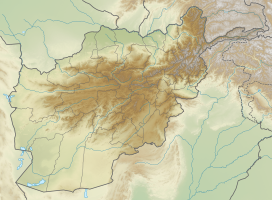|
Kuh-e Bandaka
Kuh-e Bandaka (Pashto: کوه بندکا) or Kohe Bandaka, Koh-i Bandaka, Bandako, or incorrectly Koh-i-Bandakor[2][3]) is one of the highest peaks of the Hindu Kush mountain range in Badakhshan in northeastern Afghanistan. It is northeast of Kabul and west of Chitral, in Pakistan. Separated by a relatively low pass from the core of the Hindu Kush, it is the second highest mountain entirely within Afghanistan,[2] and the most topographically prominent peak in all of Afghanistan.[1] On September 22, 1960, the second German expedition to visit the Hindu Kush made the first ascent of Kuh-e Bandaka. The members of the expedition were Wolfgang von Hansemann, Dietrich Hasse, Siegbert Heine, and Johannes Winkler, all from West Berlin; all attained the summit. They made four camps, with their base camp in the Dare-Sachi Valley at an altitude of 4,100 m (13,500 ft). The expedition also made multiple first ascents in the Pagar Valley of the Hindu Kush, and made meteorological and geological observations and sketch maps.[2] There have been over fifteen subsequent ascents, via a variety of routes; however there have been no recorded ascents since 1977.[4] References
|
||||||||||||||||||||||||||||||||
